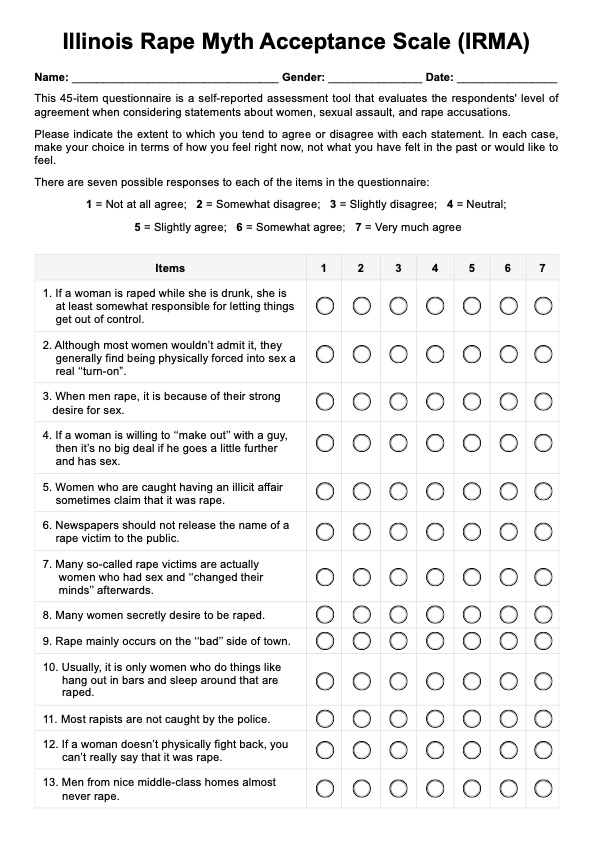Rape myths are false beliefs or stereotypes that minimize, justify, or excuse sexual violence and blame victims.

Click here to learn more about the Illinois Rape Myth Acceptance Scale. Download a free PDF template to use for your research or practice.
Rape myths are false beliefs or stereotypes that minimize, justify, or excuse sexual violence and blame victims.
The Illinois Rape Myth Acceptance Scale (IRMA) can be used by researchers, educators, advocacy groups, and organizations to study societal attitudes, inform public education efforts, and evaluate the impact of interventions.
The Illinois Rape Myth Acceptance Scale (IRMA) is a validated survey tool designed to measure an individual’s acceptance of rape myths. It includes statements, such as those suggesting that women secretly desire certain behaviors, which participants rate based on their level of agreement. This provides valuable insight into their attitudes and beliefs.
EHR and practice management software
*No credit card required
Free
$0/usd
Unlimited clients
Telehealth
1GB of storage
Client portal text
Automated billing and online payments